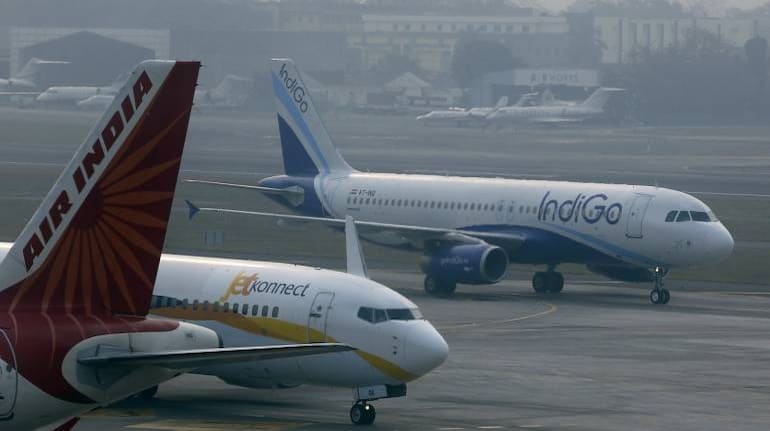



Modifying engines in its 98 A320neo aircraft, as directed by industry regulator DGCA, will be a logistical challenge for IndiGo, testing its ability to put in a system that will minimise disruption in operations and thus limit revenue loss.
The regulator on November 1 had asked the country's largest airline to fix 97 Airbus A320neos engines by January 31, failing which, the airline won't be allowed to fly.
IndiGo replied that it will be able to sustain its present schedule. "We are working with both P&W (Pratt & Whitney) and Airbus on mitigation so that we have enough modified spare engines by January 31, 2020. In the meantime, our schedule remains intact," the airline had said in a statement.
IndiGo added that it currently operates fleet of 98 A320 NEO planes, and 45 percent of its engines are already modified.
The DGCA directive had come after several flight disruptions involving A320neo aircraft. This included four incidents within a week.
Several factors
Doing maintenance, including changing or modifying parts like an engine, calls for a seamless co-ordination of several moving parts.
"There are three main issues. Availability of replacement engines, workshop facilities and engines fully shipped fully dressed (complete in all aspects)," said a senior industry executive.
"If the first two factors are there, then the whole replacement may not take more than three to four hours. In case, the replacement engine is sent in modules, then they have to be assembled and then put on the wings," he added. That may take up to eight hours.
Another executive points to quick engine exchange kit, called QEC. "This is usually in the form of ready-for-installation. But critical here is that the supply of engines has to be smooth," added the executive.
While changing engines itself may take a few hours, more critical would be to co-ordinate with suppliers, taking off the aircraft from service and getting is back to the network with minimal impact on revenue. "Everything would have to be just-in-time," said one of the executives quoted above.
Once fitted with the new engine, the aircraft may need a test flight before returning to service, said an executive. However, another added that a test flight may not be needed. "The airline made just need to have a high power ground run up, which takes about 1.5 hours, but is subject to getting a slot from the air traffic controlled to use the runway," he added.
Also critical would be the manpower needed. Each engine change would need a crew of five to six engineers and technicians.
Cost factor
But who pays for replacing these engines? Is it the airline, or the lessor, or is it the supplier and manufacturer who pick up the tab?
It is not very clear.
Typically, in all lease agreement, there is a standard clause on cost sharing. IndiGo too works on the sale and leaseback model, wherein it sells aircraft to a lessor and then leases them back.
"The cost sharing a hotly contested item during lease negotiations. So it depends on what IndiGo has agreed upon," said an industry executive.
The January 31 deadline means that it will be only after the fourth quarter of the fiscal that one will be able to understand the impact of these engine changes on IndiGo's bottomline.
So can IndiGo pull it off?
"IndiGo has a very good work systems in place. They can pull it off," says a senior executive from the industry.
It is a system that had made the airline known for its on-time performance. The system was tested earlier this year when a weather-related disruption brought to fore the shortage of pilots, and the airline took some time bringing back normalcy in its services.
It is time for a test again.
Discover the latest Business News, Sensex, and Nifty updates. Obtain Personal Finance insights, tax queries, and expert opinions on Moneycontrol or download the Moneycontrol App to stay updated!
Find the best of Al News in one place, specially curated for you every weekend.
Stay on top of the latest tech trends and biggest startup news.